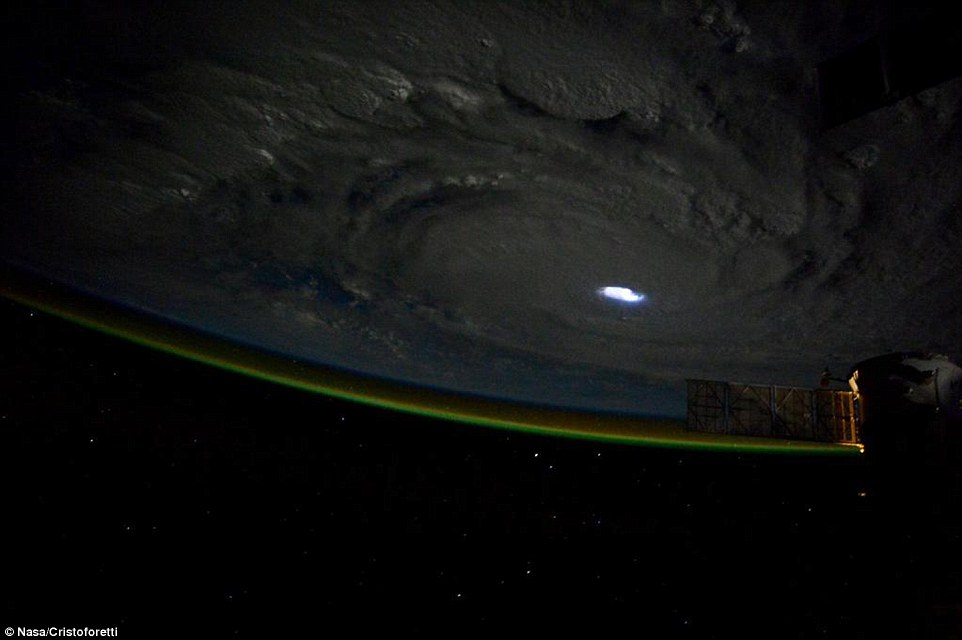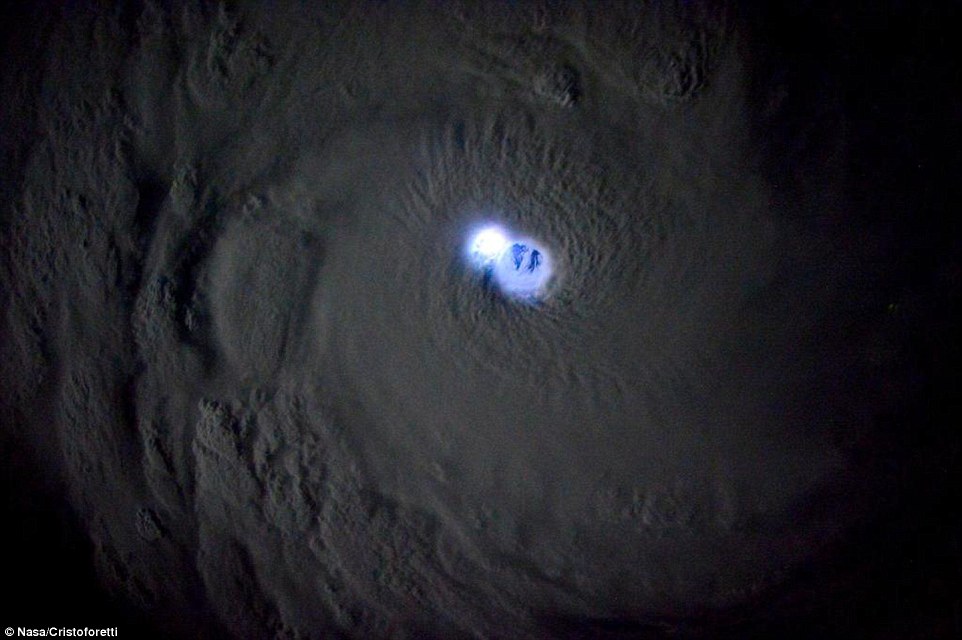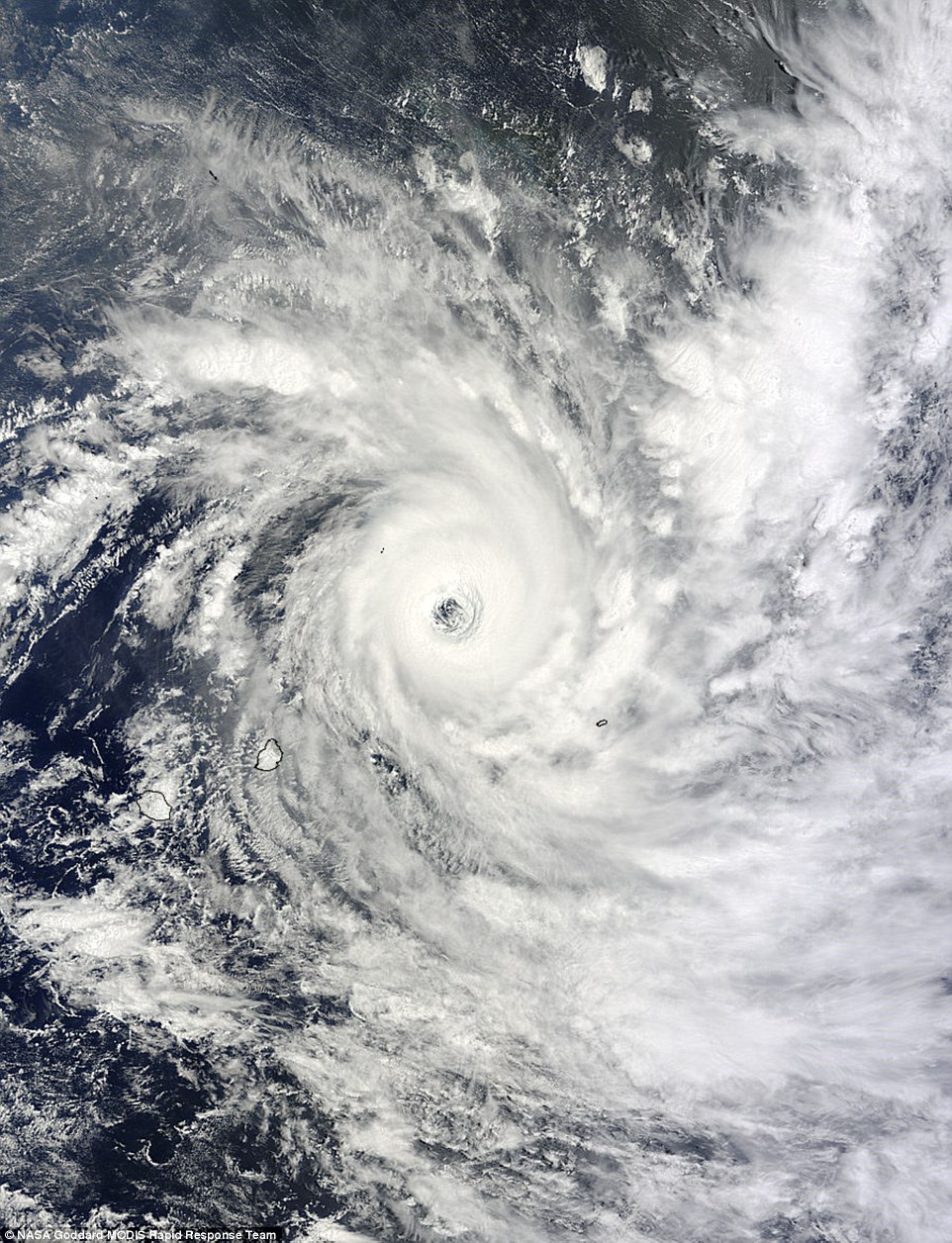The incredible views of tropical cyclone Bansi were spotted in the Indian Ocean near the island of Mauritius, when the ISS was east of Madagascar.
The calm 'eye' of the storm can be seen illuminated by lightning and surrounded by swirling clouds as it made its way across the ocean
The images were taken by Italian European Space Agency astronaut Samantha Cristoforetti aboard the ISS earlier this month.
They show the swirling motion of the storm around the central blue eye.
According to Nasa, the wall of the eye is being illuminated by a flash of lightning in the centre of the storm - which also lights up nearby clouds.
The low-light settings of the camera used to take the image accentuate the contrast.
'It looks like the storm is powering up some sort of weapon!' said Phil Plate at Slate.
One image also shows a thin green line over the horizon known as airglow, which occurs when oxygen atoms are energised by the sun.

Stars appear above the airglow layer, and the solar panels of a docked Russian spacecraft jut into the image.
Tropical cyclone Bansi formed in the southwestern Indian Ocean on 11 January this year.
By the time Cristoforetti's photos were taken, on the following day, Bansi had achieved tropical cyclone strength, with sustained maximum winds over 115 miles (185km) per hour.
The cyclone would reach category 4 strength before becoming a weak extra-tropical system on 19 January.





Reader Comments
to our Newsletter